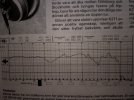Thats interesting, it says somehow: You never know what piece of shiit you get, so even EQ makes not much sense.

Definitely a plus point for getting a headphone with low unit to unit variation! However, just recently I have had some really great success at tuning a headphone using an Oratory EQ, and specifically altering the "customisation" filters he lists - changing the "bass" filter of course, and more complicated but yielding great results was changing the "shoutiness" filter and to lesser extent a small change to the "timbral" filter - I'm talking my HD560s here (the second one I have that I didn't send to Oratory for measurement so I didn't have a personalised measurement of that unit to rely on). HD560s doesn't have bad unit to unit variation, but it does have it, after my finetuning it sounds bloody excellent now, smooth/balanced & detailed throughout the frequency range. So, in conclusion, low unit to unit variation is a fantastic start, but I'm a recent convert to subtle broad changes (low Q) in the rest of the frequency range - specifically the "customisation" filters that
@oratory1990 implements in his EQ's he publishes which would help combat unit to unit variation as well as perhaps moulding the target curve to more suit your own HRTF (preference), would be a combination of the two. Previously I had been a bit hesitant to mess with the Harman Curve beyond bass manipulation, but I think careful changing of those customisation filters along with listening to your test tracks or portions of those test tracks that highlight those targetted frequency areas to really blend the frequency range into one smooth strata, lol! (I've recently found watching a spectrum analyser as I listen to the tracks helps to identify sounds you hear vs the frequency at which they occur, so you can target & check your filter frequency changes.)
EDIT: these are the customisation filters I was talking about (red anotations in following pic) (this is the Oratory EQ for the HD560s):

